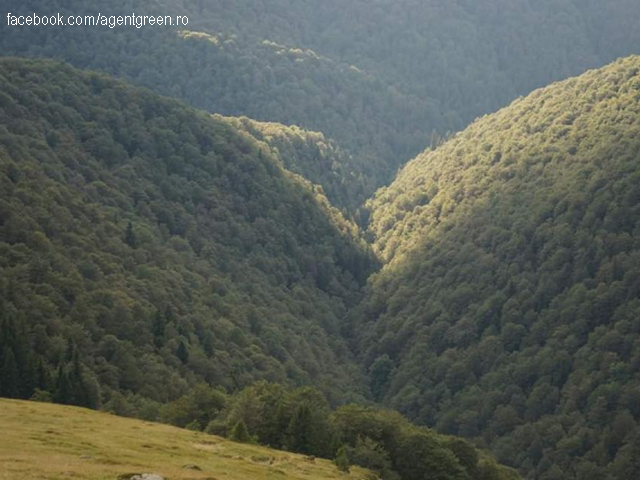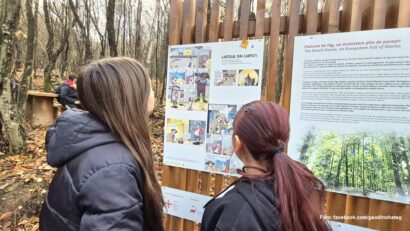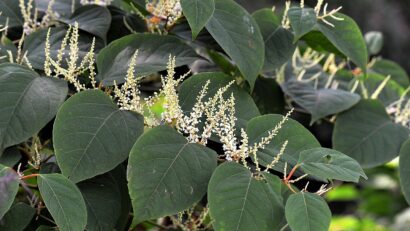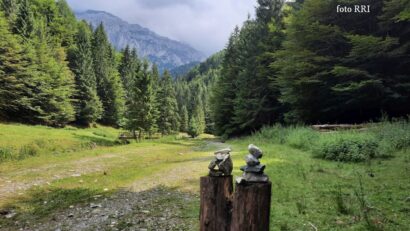Romana’s Virgin and Quasi-Virgin Forests
Romania's Carpathian Mountains are home to the largest secular forests in Europe

România Internațional, 04.10.2019, 13:01
Romanias Carpathian Mountains are home to the largest secular forests in Europe. Back in the day, in the 18th century for instance, the forests were roaming with herds of deer, aurochs and wild boars. Unfortunately, irrational exploitation and deforestation, have destroyed a large part of these forests. Around the year 1900, there were some 2 million hectares of forests, but only 200,000 have remained. Even if the forest area has reduced in size, Romania is still the richest country in Europe in terms of secular forests. Huge trees, reaching up to 60 m in height, are still reigning the forests, and big carnivorous animals, such as wolves, bears and lynxes are still populating the wild areas. In order to ensure a better protection, the forests in Izvoarele Nerei, Cheile Nerei-Beusnita, Domogled-Valea Cernei, Cozia and Codrul Slatioara have been included in the UNESCO world heritage list.
Gheorghe Mihailescu, the General Director of Romsilva, the National Forest Authority, told us about the importance of these forests:
“The virgin and quasi-virgin forests in Romania are extremely important as they are models of how forests grow, develop and regenerate naturally. Their lives go on without any human intervention. And these are among the most diverse forests. Not always a forest that is 100% natural and closed is also extremely diverse. The diversity of a forest is also rendered by the diversity of its generations. For instance, in a 100% natural forest, one can find just one 180 year – old generation. But, in order to be able to speak of diversity, 10, 20 and 30 year old trees must also be part of that forest. Not always natural forests are the most diverse. The most diverse forests and the most diverse areas are a combination of 100% natural forests, cultivated forests, managed forests, meadow crossings, grasslands, etc. These are more diverse and more beautiful than the 100% natural ones, because these natural forests tend to become 100% secular. And then, the domination of 100, 200 or 300 year-old trees no longer encourages the young generations. We use them as models and there are not too many left. There are just a few countries in Europe that sill have such forest. Currently, we have some 28,000 hectares, identified and mapped, which meet this criterion, namely to have been declared virgin or quasi-virgin.”
A Catalogue of virgin and quasi-virgin forests was made in 2016, which means that these forests are under strict protection, and no human interference is allowed. So far, some 7000 hectares of virgin and 22,100 hectares of quasi-virgin forests have been included, and the process continues. However, some environmental organizations have accused authorities of destroying secular forests and have called for the intervention of the European Commission. The Greens say that Romsilva organizes forestry works inside the NATURA 2000 protected sites, without a proper analysis of the impact of tree cutting in these unique areas.
Gheorghe Mihailescu, the General Director of Romsilva, responded to such accusations:
“Forests are protected. Those forests have no problem whatsoever; at least the forests in the administration of Romsilva are untouched. Environmental organizations have submitted a few notifications to the European Commission. Indeed, they compare a situation of 2004, the Pin Matra survey, with what weve done now. Its unfair to compare a concrete situation with a theoretical one. All those forests are monitored and are under a strict control. There are certain errors in that there are national roads, changed areas, in the UNESCO natural heritage, but that was an error because those in charge of that survey did not go to the respective areas. Were now trying to correct those errors. Certain NGOs dont accept corrections. But a lot of NGOs join us and help us. We have our own errors too here and there. Our credibility is somehow altered but were struggling to recover it. Today there is talk in Europe that Romania doesnt protect its forests, but this country has the most valuable beech forests, the nicest flora, the largest biodiversity. Havent we protected them? Do you know that certain European countries call a garden with a few trees national and natural parks?”
Romania has 6.5 million ha of forest, of which Romsilva, a state-owned company, manages 3.14 million ha, accounting for 48% of the countrys forest stock. Romsilva also manages 22 national and natural parks covering over 850,000 ha. 245,000 ha of that area account for areas with a strict and complete protection, where human activities are restricted. This autumn, Romsilva has started the zoning with distinct boundaries of the 22 national and natural parks.
Gheorghe Mihailescu told us more:
“Weve requested the zoning of parks to be marked by boundaries to know where we can carry out certain works. We didnt know whether a certain area had complete protection or it was an area with a sustainable development or a preservation area. So our employees will do boundary marking using GPS and concrete demarcation elements, in order to mark the boundary between those areas because people can make mistakes when the ground is not marked by clear boundaries.”
A yellow square surrounded by a red stripe will mark the area with a strict protection; a blue square surrounded by a white stripe will mark the area with a complete protection and a yellow square surrounded by a white stripe will mark natural reserves or monuments. The boundaries of national and natural parks will be marked by a red square surrounded by a white stripe.






























